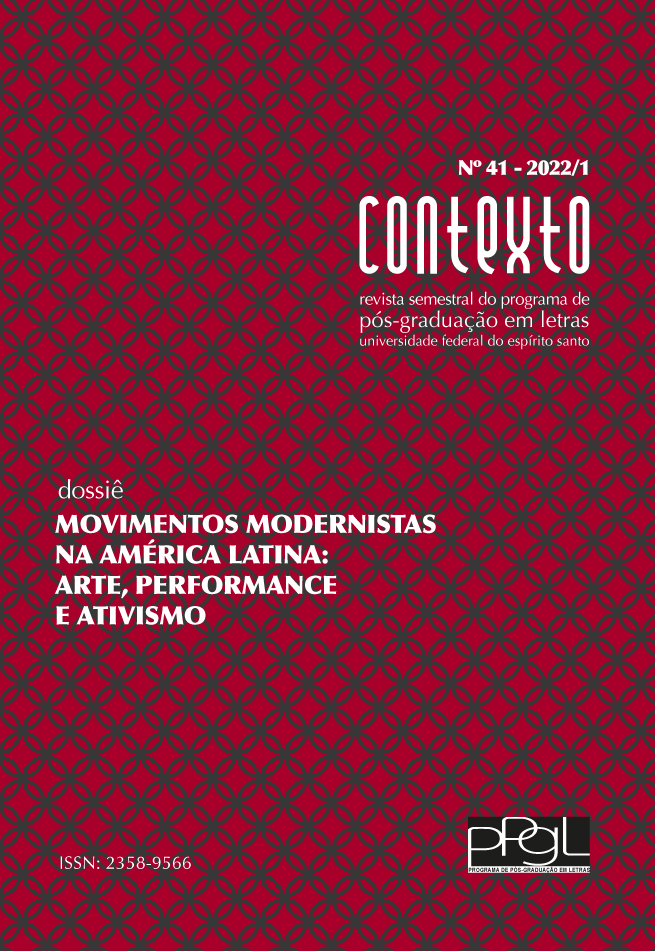Locais do medo: configurações do espaço em narrativas góticas dos séculos XVIII e XIX
Places of fear: setting configurations in gothic narratives of the 18th and 19th centuries
DOI:
https://doi.org/10.47456/contexto.v1i41.35412Palavras-chave:
Gótico, Topoi, Espaço, Loci horribilesResumo
O presente artigo é uma análise do como algumas narrativas góticas do século XVIII e XIX, como The Castle of Otranto (1764), de Horace Walpole; The Mysteries of Udolpho (1794), de Ann Radcliffe, “O castelo mal-assombrado” (1819), de E. T. A. Hoffmann; e “The Fall of the House of Usher” (1839), de Edgar Allan Poe; configuraram o espaço como loci horribiles. Para isso, entende-se que esse elemento compõe um dos topoi dessa estética ficcional, ou seja, um dos elementos discursivos repetidos e incorporados através das diferentes narrativas, tornando-se o conceito norteador do estudo. Procura-se como as imagens e motivos dos loci horribiles foram configuradas, recapituladas e alteradas bem como estuda-se quais ideais foram problematizadas através dessas configurações espaciais. Dessa forma, percebe-se que o castelo e a casa são envoltos em uma atmosfera sombria e de medo a fim de indiciar os problemas morais das instituições que ali habitavam.
Abstract
This study is an analysis of how some gothic narratives of the 18th and 19th centuries, such as The Castle of Otranto (1764), by Horace Walpole; The Mysteries of Udolpho (1794), by Ann Radcliffe, “The Morgadio” (1819), by E. T. A. Hoffmann; and “The Fall of the House of Usher” (1839), by Edgar Allan Poe, organized the setting as loci horribiles. To do so, that narrative element is understood as one of the main gothic topoi, that means, one of the discursive elements repeated and incorporated trough different narratives, so the concept guides the study. It is searched how the images and motives were arranged, recovered, and modified in the loci horribiles; in addition it is studied what ideas were problematized by those spatial configurations. Hence, it is perceived that the castle and the house are covered by a dreadful atmosphere in order to indicate the moral debilities of the institutions that lived in those places.
Downloads
Publicado
Edição
Seção
Licença
Copyright (c) 2022 Xênia Amaral Matos

Este trabalho está licenciado sob uma licença Creative Commons Attribution-NonCommercial 4.0 International License.

Este obra está licenciado com uma Licença Creative Commons Atribuição-NãoComercial 4.0 Internacional.





